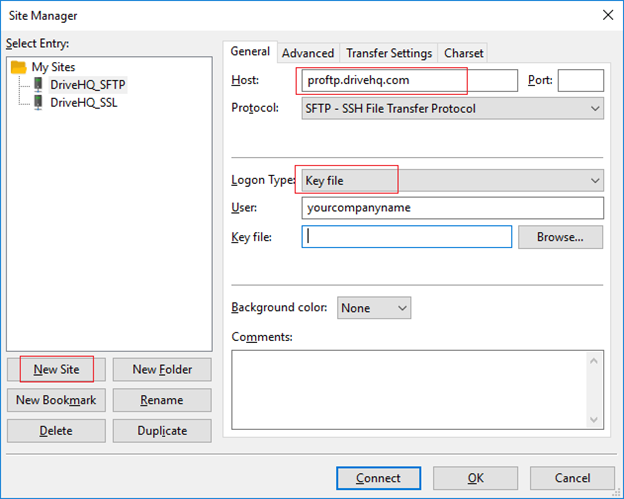

- FILEZILLA SSH KEY NO PASSWORD GENERATOR
- FILEZILLA SSH KEY NO PASSWORD PASSWORD
- FILEZILLA SSH KEY NO PASSWORD MAC

Many users set up an alias for the ssh command so they don’t have to type as much to log into the remote host. SHA256:RBA3OArdiEZ+ABCDEFGHIJKLMNOPQRSTUVWXYZ key's randomart image is: Your public key has been saved in /users/mmill116/.ssh/id_rsa.pub. Your identification has been saved in /users/mmill116/.ssh/id_rsa. $ ssh-keygen -t rsaĮnter file in which to save the key (/users/mmill116/.ssh/id_rsa):Įnter passphrase (empty for no passphrase): rw- 1 mmill19 Aug 26 11:03 authorized_keys The steps should look similar to the following example: $ cd.

Finally append the id_rs.pub file to the authorized_keys file. If you don’t have these files, generate them with the “ssh-keygen -t rsa”. run “ls -al” to see if you already have an id_rsa and id_rs.pub file. The steps are similar to the steps for your laptop. Lastly, on the JHPCE cluster, you will need generate ssh keys within the cluster to allow you to qrsh between nodes without using a password. If you reboot your desktop/laptop, you will need to rerun the ssh-add and ssh-agent commands. The ssh-agent will remain active for as long as your desktop or laptop is up and running. You should now be able to use ssh without entering a password. To use ssh-agent, run ssh-add (you will be prompted for the passphrase you used) To avoid having to enter your passphrase every time you use ssh, you can use the “ssh-agent” program. To test that everything is working you should be able to log into the remote host from your local host with the following command: ssh you start ssh, you will be prompted for the passphrase that you used to protect your key.
FILEZILLA SSH KEY NO PASSWORD PASSWORD
Where you replace with your JHPCE userid and where you enter your JHPCE password when you are prompted for it by ssh. You can perform the copy and append operations in one line as follows cat ~/.ssh/id_rsa.pub | ssh \ If there is no ~/.ssh directory in the remote host, you will need to login to the remote host and create a. ssh subdirectory of your home directory on the remote host (one of the jhpce login servers, e.g. Next you want to copy your public key file to the remote host and append it to the authorized_keys file in the. This will break all password-less logins that you set up with your previous keys.
FILEZILLA SSH KEY NO PASSWORD GENERATOR
If you have already configured passwordless login and you run the key generator a second time, it will overwrite your previous public and private key files. You should only ever have to run the ssh key generator once on your local host. The former contains your private key while the latter contains your public key. ssh subdirectory of your home directory, i.e. The key generator will put two files in the. For the other questions, you can select the default values. For security reasons, we recommend that you use a passphrase to protect your key.
FILEZILLA SSH KEY NO PASSWORD MAC
linux and mac osx)įirst, on your local laptop/desktop, cd into your home directory and invoke the ssh key generator: ssh-keygen -t rsa Instructions for unix-based machines (e.g. In the documentation below your desktop/laptop is referred to as the “local host” and our login server(s) are referred to as the “remote host”. There is a one-time setup for each of the local hosts that you want to set up with keypair authentication. The idea is to set up your desktop/laptop so that you are recognized by our login servers without you having to enter your password every time. This is a technology based on public-key cryptography. Setting Up your local hosts for password-less login via SSH


 0 kommentar(er)
0 kommentar(er)
